Imagine stepping out onto your balcony and being greeted by a vibrant oasis of greenery and blossoms, right in the heart of the city. Whether you’re a gardening novice or a seasoned green thumb, balcony gardening offers a unique opportunity to cultivate beauty, serenity, and even fresh produce, no matter how small your space may be. The magic of balcony gardening lies in its ability to transform a simple outdoor space into a personal Eden, marrying the joys of gardening with the convenience of urban living.
This step-by-step guide is crafted to help you navigate the rewarding journey of balcony gardening, providing practical tips and insights every step of the way. From selecting the right plants to optimizing sunlight and space, we’ll cover everything you need to nurture your own little corner of nature. For beginners, this guide will demystify the process, making it approachable and fun, while experienced gardeners will find inspiration to elevate their current setups with new ideas and techniques. Dive in with us, and let’s embark on this delightful gardening adventure together, where the sky is quite literally the limit!
Assess Your Balcony Space
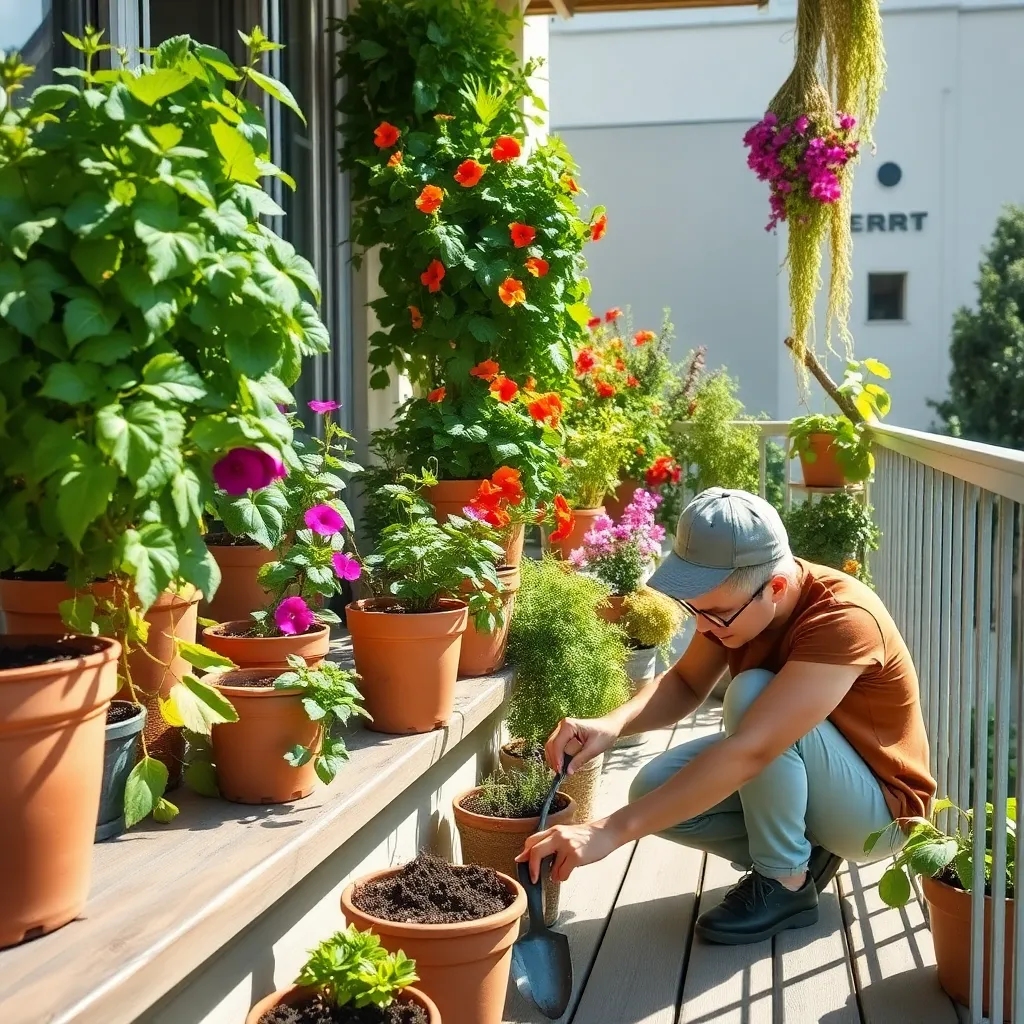
Before starting your balcony garden, take a moment to assess the available space to ensure it meets your gardening goals. Measure the dimensions of your balcony, as this will determine how many plants you can accommodate and their arrangement.
Consider the amount of sunlight your balcony receives throughout the day, as light conditions are crucial for plant growth. Identify whether your space is mostly sunny, partly shaded, or predominantly shaded, and choose plants that thrive in those conditions.
Additionally, evaluating the wind exposure is critical since balconies can often be windy, which may affect certain plants negatively. If your balcony is exposed to strong winds, consider installing windbreaks or selecting hardy plants like lavender or rosemary.
For those ready to delve deeper, think about the weight-bearing capacity of your balcony, especially if you plan to use containers filled with soil and water. Use lightweight soil mixes that include perlite or vermiculite to reduce the load while still providing the necessary nutrients for your plants.
Select Suitable Containers
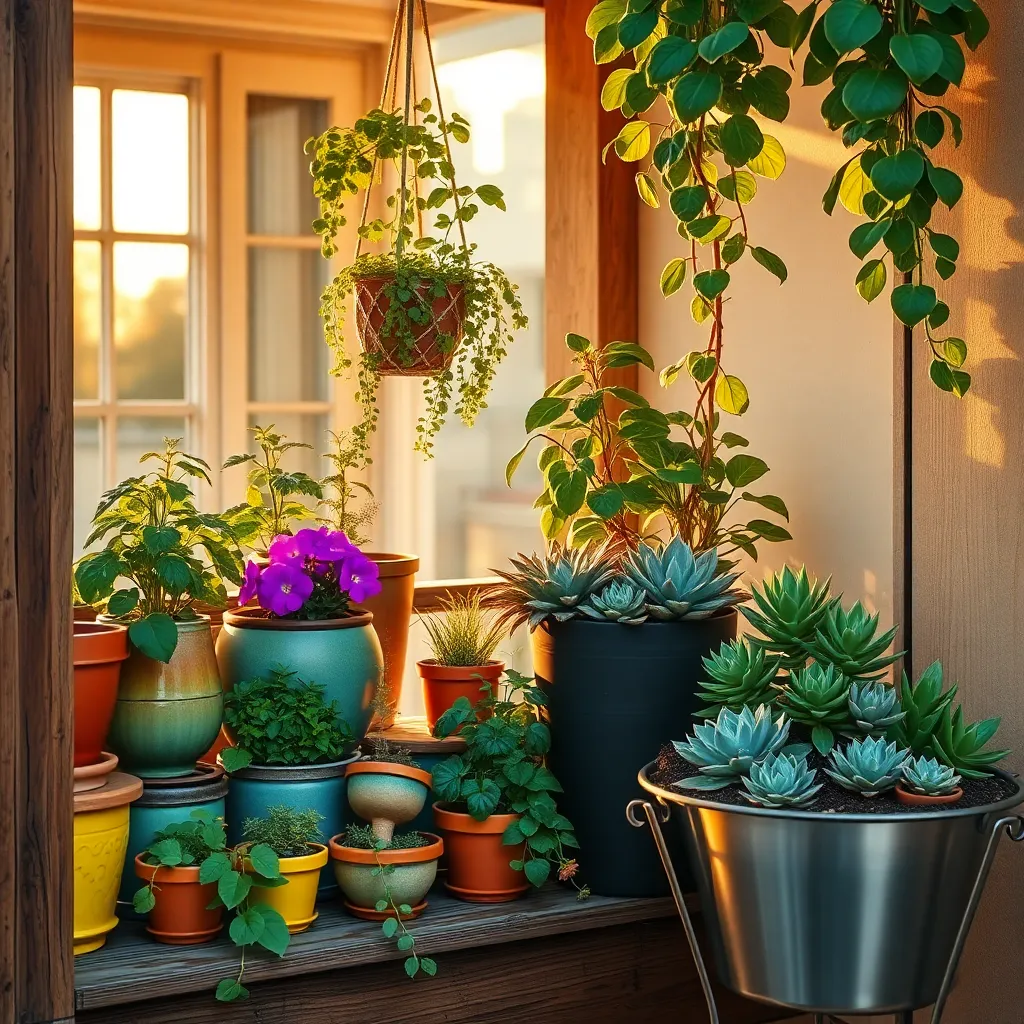
When choosing containers for your balcony garden, consider the size and type of plants you wish to grow. Small herbs like basil or mint can thrive in shallow pots, while larger plants, such as tomatoes or dwarf fruit trees, need deeper containers to accommodate their root systems.
Opt for containers with good drainage to prevent waterlogging, which can lead to root rot. Look for pots with multiple drainage holes, or consider adding a layer of gravel at the bottom of the container to improve water flow.
Material choice is important, as it affects plant health and care frequency. Clay pots are breathable and help prevent overwatering but may require more frequent watering, while plastic pots retain moisture longer, reducing the watering frequency.
Consider using self-watering containers if you’re often away or forgetful about watering. These containers have a reservoir at the bottom that allows plants to absorb water as needed, keeping the soil consistently moist without overwatering.
Choose Appropriate Plant Varieties
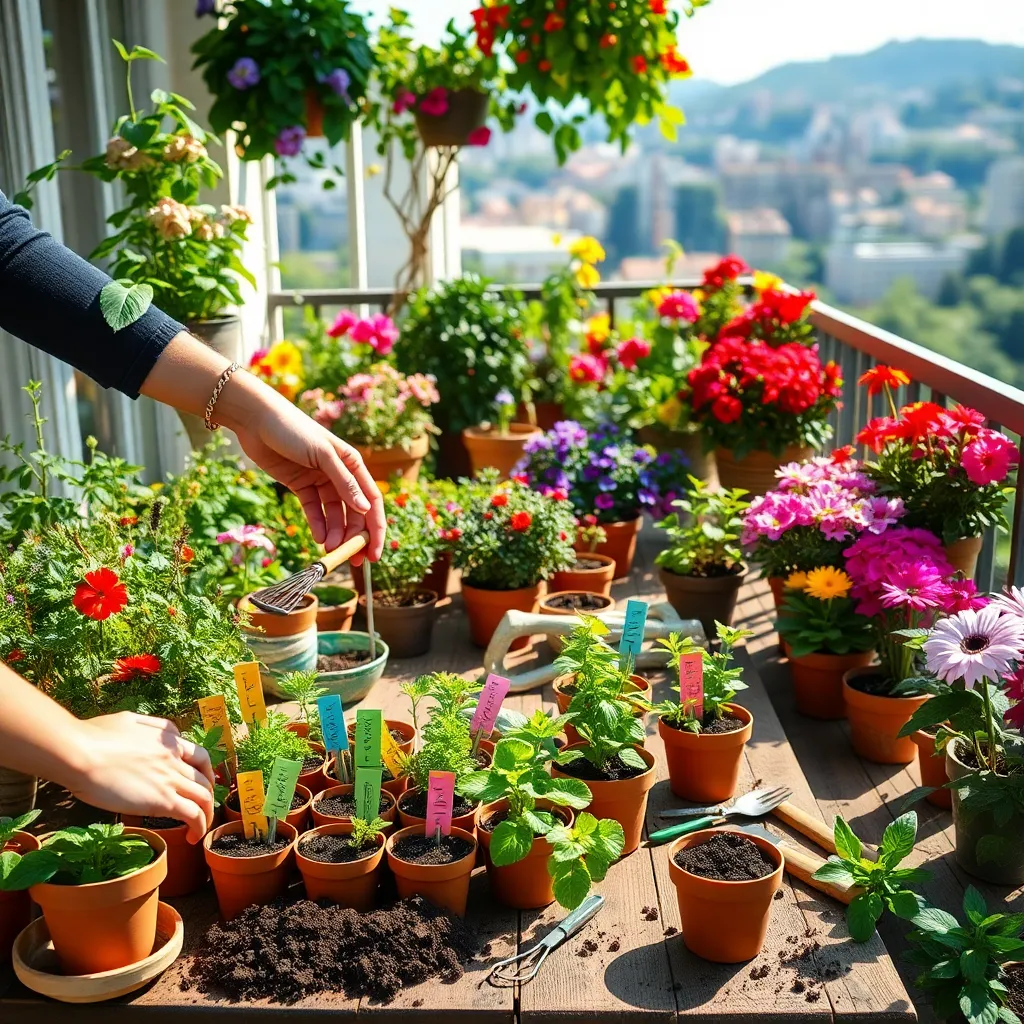
When choosing plant varieties for your balcony garden, consider the amount of sunlight your space receives. If your balcony gets full sun for most of the day, opt for sun-loving plants like tomatoes, peppers, or marigolds.
For balconies with partial shade, select plants that thrive with less direct sunlight such as ferns, hostas, or impatiens. Herbs like mint and parsley also do well in these conditions and can add a practical culinary element to your garden.
It’s essential to consider the climatic conditions of your area when selecting plant varieties. Research native plants or cultivars that are known to do well in your region’s climate, as they typically require less maintenance and are more resistant to local pests.
For beginner gardeners, starting with easy-to-grow varieties can provide a rewarding experience. Consider plants like lettuce, radishes, and pansies, which are relatively forgiving and can quickly boost your gardening confidence.
- Choose a lightweight potting mix that drains well to support healthy root development.
- Ensure your containers have adequate drainage holes to prevent waterlogging, which can harm plants.
- Regularly check moisture levels and adjust your watering schedule based on the specific needs of each plant variety.
Prepare and Enrich Soil
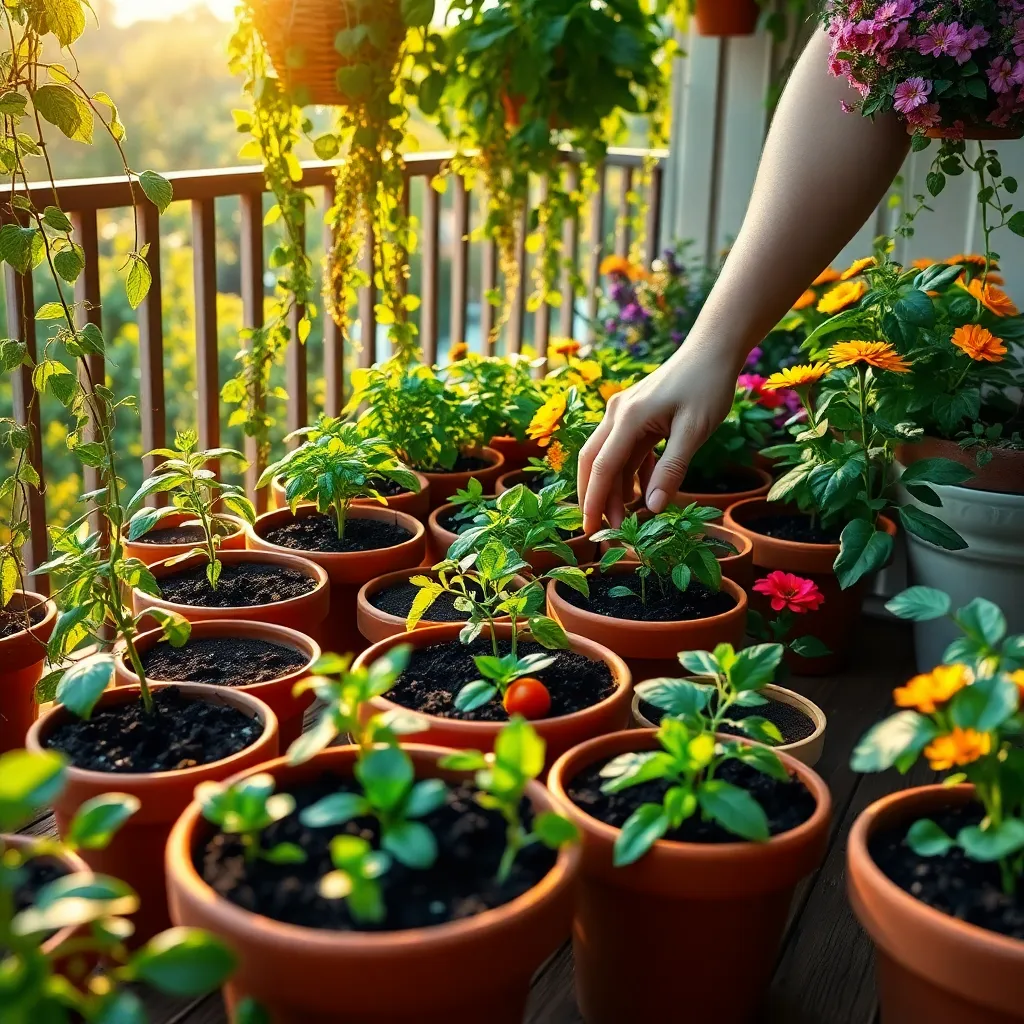
To ensure a thriving balcony garden, it’s essential to start with well-prepared and enriched soil. Begin by choosing a high-quality potting mix, as this provides the proper balance of nutrients and drainage necessary for container plants.
Consider adding organic matter such as compost or aged manure to your potting mix. This addition not only improves soil structure but also boosts nutrient content, giving your plants a healthy start.
For those looking to enhance their soil further, incorporating materials like perlite or vermiculite can help improve aeration and drainage. These amendments are particularly beneficial for balconies exposed to heavy rainfall, preventing waterlogged roots.
Advanced gardeners might use soil pH testing kits to tailor their soil to specific plant needs. Adjusting pH with lime or sulfur can optimize nutrient uptake for plants like blueberries or azaleas, which prefer more acidic conditions.
Implement a Watering Schedule
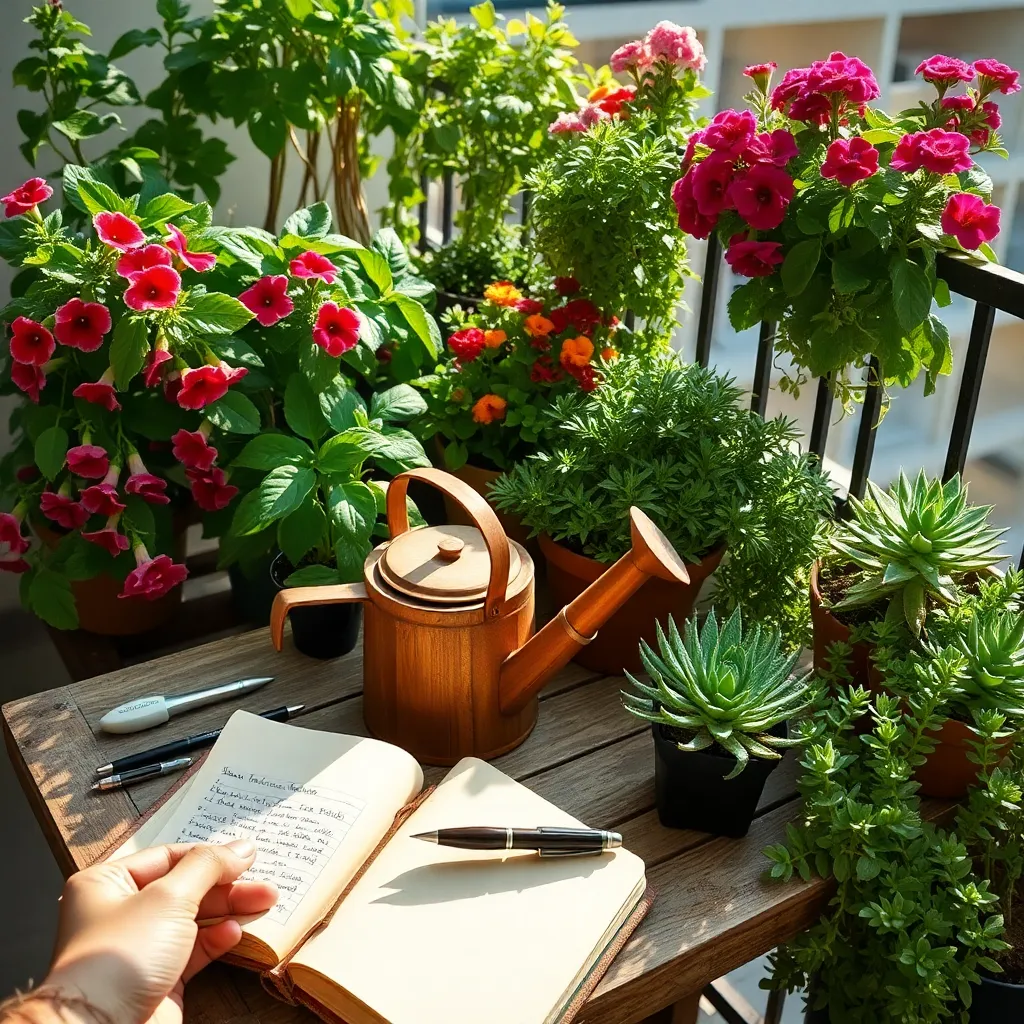
After preparing and enriching your soil, it’s crucial to implement a consistent watering schedule to ensure your plants thrive. Watering needs vary depending on the plant species, size of containers, and weather conditions on your balcony.
Beginners should start by checking the soil moisture with their fingers; if the top inch feels dry, it’s time to water. Typically, container plants need watering more frequently than those planted in the ground, often every 1-3 days, depending on temperature and humidity.
For a more advanced approach, consider using self-watering pots or installing a drip irrigation system to maintain consistent soil moisture without overwatering. These systems can be especially beneficial in hot climates or for gardeners with busy schedules who might forget to water regularly.
It’s important to water early in the morning or late in the afternoon to reduce evaporation and prevent leaf scorching. Direct water at the base of the plant to ensure the roots receive adequate moisture, and avoid wetting the foliage to minimize the risk of fungal diseases.
Conclusion: Growing Success with These Plants
As we wrap up our journey through the ‘Step By Step Guide To Balcony Gardening,’ we’ve unearthed five key relationship concepts that can truly transform your green space and your personal connections. First, we explored the importance of understanding your space, akin to knowing your partner’s needs. Next, we delved into the art of selecting the right plants, much like choosing the right words and actions to nurture love. Third, we highlighted the significance of consistent care, reminiscent of daily gestures that keep relationships thriving. Fourth, we discussed troubleshooting issues, drawing parallels to resolving conflicts with patience and understanding. Finally, we embraced creativity and adaptability as tools to keep both gardens and relationships blooming.
As an actionable next step, why not choose one plant to start your balcony garden today? This small beginning can symbolize a commitment to growth in your relationships.
Remember, great relationships, like gardens, require ongoing care and attention. Save or bookmark this article, so you have these insights at your fingertips for whenever you need a guiding hand. Embrace this journey, and watch as both your garden and your relationships flourish, promising a future filled with vibrant growth and harmony.

